Healthy Eating Guidelines
First, here's the healthy eating guidelines in a nutshell. They're pretty simple, really.
You can think of this as adding highly nutritious food and decreasing junk food.
1. Eat more fruits and vegetables.
2. Eat more whole foods.
3. Use unrefined salt.
4. Eat healthy fats instead of unhealthy fats.
5. Try superfoods.
6. Eat more foods that are prepared with traditional methods.
7. Eat more organic foods.
8. Eat less processed food.
9. Eat fewer foods with unhealthy ingredients.
10. Pay attention to how specific foods affect you.
Basics
Food bought fresh (or sometimes "minimally processed"), then cleaned or cooked at home. Examples: apples, carrots, t-bone steak, brown rice. Read more.
Manufactured, packaged food. Examples: white flour, canned soup, Wonder Bread, Hot Pockets. Read more.
Practically everything in the supermarket that's in a box, bag, jar, or can. See the list.
Food additives make manufactured food possible. Processed foods have food additives; whole foods don't. Read more.
Guidelines in Detail
1. Eat more fruits and vegetables.
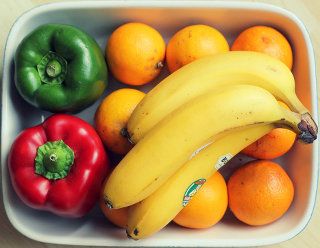
Nutrition experts are often at odds with each other, but they all agree on eating more fruits and vegetables!
Fruits and vegetables contain vitamins, minerals, phytochemicals ("plant chemicals"), antioxidants, fiber, and enzymes. Each is different: variety ensures you get the most from what you eat.
In February 2017, the International Journal of Epidemiology published an analysis of 95 studies about fruits and vegetables. The results were clear.
The more you eat the more benefits you get. The lowest risk for cancer came from 7.5 servings of fruit and vegetables a day. The lowest risk for heart disease, stroke, and "all-cause mortality" came from 10 servings a day.
At the same time, it was found that a little helps a lot. Even 2.5 servings of fruits and vegetables reduces risk of disease and death.
See more on eating more fruit and vegetables.
2. Eat more whole foods.

Eating foods in their whole, natural form maximizes the nutrients you get (and minimizes the bad stuff).
Fruit instead of candy, roast beef instead of hot dogs, brown rice instead of white rice!
3. Use unrefined salt.
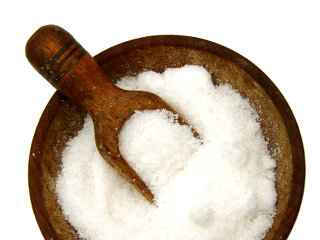
Unrefined salt retains the healthful minerals that the refining process removes.
Refined salt is the ordinary table salt available in the supermarket.
You can easily buy unrefined salt; it just takes a little shopping.
Read more on unrefined salt.
4. Eat healthy fats instead of unhealthy fats.
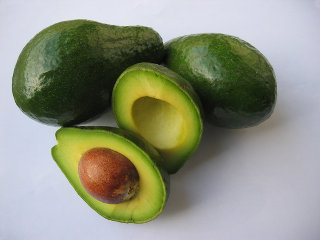
Some healthy fats: olive oil, butter, coconut oil, avocados, nuts, flax seed oil.
Is it OK for your heart to eat healthy fats? See the book Fat and Cholesterol Are Good For You!
Some unhealthy fats: trans fats (partially hydrogenated oils), margarine, commercial salad dressing, refined vegetable oils.
Read more about fats.
5. Try superfoods.
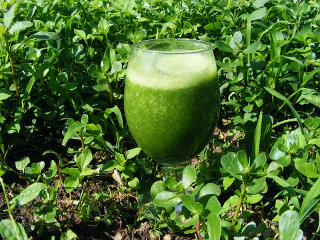
A superfood has concentrated nutrients, often nutrients that aren't available in other foods!
Many kinds of foods can be superfoods: exotic fruits, berries, green drinks such as wheatgrass juice, seaweed, herbs, and healthy fats.
Weston Price documented that the world's healthiest people eat traditional diets. Their diets included sueprfoods such as seafood, organ meats, and raw milk products.
Read more about superfoods.
6. Eat more foods that are prepared with traditional methods.
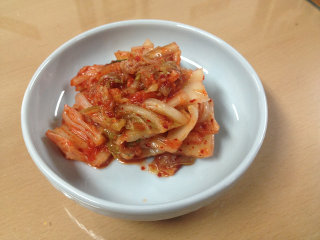
Eat more foods that are extracted, cultured, or otherwise prepared with traditional methods, rather than with modern industrial food processing methods. An example is traditionally-made (not commercially made) sauerkraut.
7. Eat more organic foods.

If possible, eat more organic foods. You can find them at natural food stores and health food stores, but also at Wal-Mart, many supermarkets, and online stores.
8. Eat less processed food.

Eat less of the processed food found in the supermarket in boxes, bags, jars, and cans. These are foods manufactured in industrial facilities and engineered to have a long shelf life. They typically are labeled with a long list of chemical-sounding ingredients. For examples, see this list of processed foods.
9. Eat fewer foods with unhealthy ingredients.
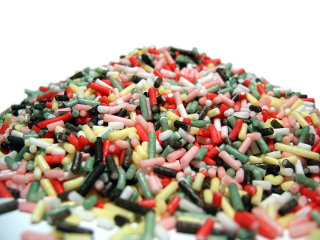
Read ingredients lists on food labels, and eat fewer foods with unhealthy food additives.
Some of the most harmful ingredients include:
- Artificial sweeteners
- Monosodium glutamate (MSG) and yeast extract
- Synthetic dyes (pictured here!)
- High fructose corn syrup (HFCS)
- Trans fats: partially hydrogenated oils
- Nitrites and other additives to processed meat
- Genetically modified corn, soy, and sugar
10. Pay attention to how specific foods affect you.

Not every healthy food is good for everybody.
Common problem foods are:
- Gluten (wheat, barley, rye, spelt)
- Dairy foods
- Nightshade vegetables
More Healthy Eating Guidelines
Michael Pollan, a professor of journalism, frequently writes about the Western diet and the American food production system. His healthy eating guidelines, in his New York Times Magazine article, Unhappy Meals (New York Times Magazine, Jan. 8, 2007), begin simply, "Eat food. Not too much. Mostly plants."
The food he refers to are whole foods. "Don't eat anything your great-great-grandmother wouldn't recognize as food," he wrote. He ended his article with nine healthy eating guidelines on choosing and enjoying food.
Pollan's book In Defense Of Food expands on that article.
Weston A. Price was a dentist and researcher who documented traditional diets. The Weston A. Price Foundation is dedicated to traditional foods and traditional farming methods.
The Foundation's Dietary Guidelines emphasize whole foods and traditional foods, and its Dietary Dangers are guidelines for avoiding the worst elements of processed and industrial foods.
